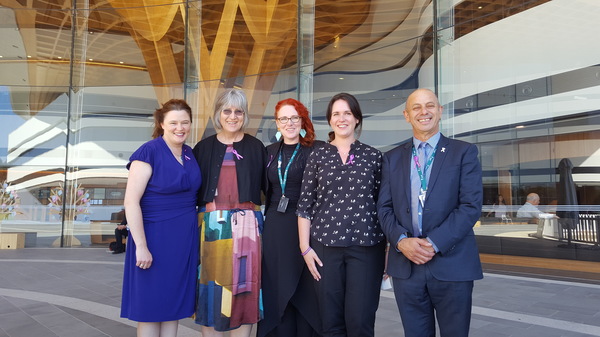
By Cam Lucadou-Wells
Family violence’s devastating reach in Casey is well documented. But where lies the solution?
About 100 field experts, police officers and residents put their heads together at a forum to help shape Casey Council’s family violence prevention strategy on 8 March.
The strategy’s lofty goal is to make the city free of family violence – in homes, workplaces, schools and neighbourhoods.
Forum participants discussed safety in Casey’s public spaces and ways to promote women’s participation in the community, workplace and economy.
For at the heart of family violence’s solution is the issue of gender equity, forum MC Helen Keleher said.
In Casey, the reported family violence incidents top a staggering 4700 a year – more than 90 a week and rising.
Casey leads the state in raw numbers, and is in the top three for metro councils on a per-capita basis.
However observers at one of the forum tables noted there were positive signs around at Casey.
More people were saying family violence and abuse of women was not OK, noted some.
As a Casey employee told Star News – it was up to every person to speak up, to make a stand. We all have to make a change.
The free child care service at the forum was seen as an inclusive step for women participants.
Casey’s streets were described as relatively safe by some.
A greater police presence would however give mixed messages – to some, it was reassuring, to others it indicated that an area was troubled.
Some noted the sexualised advertisements plastered at bus stops and shopping centres that objectify women and entrench stereotypes.
“Children shouldn’t be exposed to materials like that. It shouldn’t be up to mothers to push back.”
Statistics overwhelmingly show family-violence perpetrators tend to be men, their victims mainly children and women.
One in four women in Australia have suffered at the hands of partners.
The forms of family violence weren’t just physically harmful. Other abuses of power included taking control of joint finances or putting a female spouse down in front of mates.
Behind closed doors, it is acted out by parents in front of children. It is normalised before their eyes.
Keynote speaker Kit McMahon, chief executive of Women’s Health in the South East (WHISE), said it was “everybody’s issue”, “every day”.
“The work for change is necessarily collaborative.” And she also added it was preventable – but could take generations.
In economic terms, family violence costs the nation $13.5 billion, Ms McMahon said.
Casey’s acting chief executive Sheena Frost noted some progress on that issue – 45 per cent of Casey’s leadership positions were filled by women.
Yet the gender salary gap in Australia was about $26,000. At the current rate of progress, that gap will be bridged in 217 years, Ms Frost said.
The responses to the forum will feed into the council’s family violence prevention strategy tabled this year.






